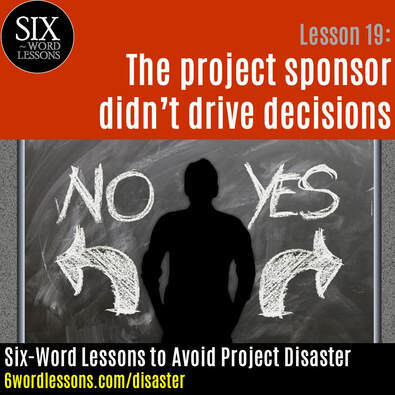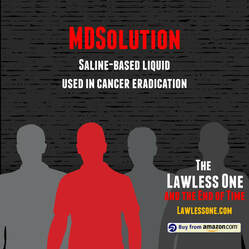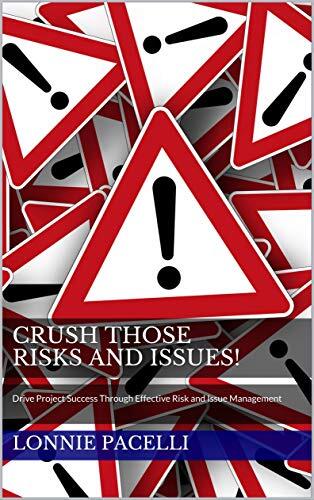Lonnie Pacelli's Blog, page 19
February 16, 2023
Diffusing Conflict Between Co-Workers
 So everything isn't always peachy keen when it comes to working together. At times co-workers are going to get in each others' face and have some conflict. As a bystander, there's some things you can do and
not do
to help put out the co-worker fire:Let them know how their conflict is affecting the rest of the team - Many times team members in conflict are only concerned about their own situation and don't see how the conflict impacts others. Truth is, when doing a team meeting with two ice-cold colleagues in the room with the pressure so thick it can be cut with a knife, the entire team is impacted. If the conflicting colleagues know the impact they are having on others they may be more likely to extend olive branches to each other.Don't play unsolicited referee - If two colleagues are having a hard time with each other, avoid injecting yourself into a referee position without being asked. One or both of the parties will likely not want your involvement and you'll likely make things worse.Do be available if asked for help - If your colleagues do ask for your help, then by all means do it. Make sure the environment is conducive to good discussion; go to a private conference room, make sure temperature is comfortable, don't do it during a time where deadlines are looming. Be impartial - Help keep things focused on facts and focused on specific behaviors, ie. Statements like "You're a slacker" focuses on the person and not on specific action. A better rephrase would be "When the rest of the team was working overtime on meeting this deliverable, you appeared to be not working as hard as the rest of the team."Avoid the water cooler banter - If one of the conflictees corners you to complain about the other, avoid gossip and taking sides about the issue. Listening with an empathetic ear is great, but keep your counsel focused on the conflictees getting together to resolve the issue.Lonnie Pacelli
So everything isn't always peachy keen when it comes to working together. At times co-workers are going to get in each others' face and have some conflict. As a bystander, there's some things you can do and
not do
to help put out the co-worker fire:Let them know how their conflict is affecting the rest of the team - Many times team members in conflict are only concerned about their own situation and don't see how the conflict impacts others. Truth is, when doing a team meeting with two ice-cold colleagues in the room with the pressure so thick it can be cut with a knife, the entire team is impacted. If the conflicting colleagues know the impact they are having on others they may be more likely to extend olive branches to each other.Don't play unsolicited referee - If two colleagues are having a hard time with each other, avoid injecting yourself into a referee position without being asked. One or both of the parties will likely not want your involvement and you'll likely make things worse.Do be available if asked for help - If your colleagues do ask for your help, then by all means do it. Make sure the environment is conducive to good discussion; go to a private conference room, make sure temperature is comfortable, don't do it during a time where deadlines are looming. Be impartial - Help keep things focused on facts and focused on specific behaviors, ie. Statements like "You're a slacker" focuses on the person and not on specific action. A better rephrase would be "When the rest of the team was working overtime on meeting this deliverable, you appeared to be not working as hard as the rest of the team."Avoid the water cooler banter - If one of the conflictees corners you to complain about the other, avoid gossip and taking sides about the issue. Listening with an empathetic ear is great, but keep your counsel focused on the conflictees getting together to resolve the issue.Lonnie PacelliKeynote Speaker | Board Director | Autism Advocate | Author | Project Management Expert | Microsoft/Accenture Veteran
See his books on Amazon.
Published on February 16, 2023 02:36
February 10, 2023
Critical Thinking Drills Influence Hiring Decisions
Excerpted from
The Truth about Getting Your Point Across…and Nothing But the Truth
 If you had to build a 150-story building, how would you go about doing it?
If you had to build a 150-story building, how would you go about doing it?
How many gas stations are there in the United States?
Why are manhole covers round?
How would you design a coffee machine for an automobile?You’ve probably heard of some of these legendary interview questions asked at many high-tech companies -- questions that baffle an interviewee as to how manhole covers possibly relate to a job as a developer, marketing manager, or a financial controller. On the surface, these seem like highly peculiar and illogical questions for an interviewer to be asking. It’s not necessarily the answer that the interviewer is looking for, but the thought process the interviewee uses to come up with the answer.
What is an interviewer looking for when asking how you would design a coffee machine for an automobile? When I do interviews I look for several things:Creativity – What unique and innovative ideas you apply to a problem.Critical thinking – How quickly you think on your feet and what assumptions you make to analyze problems and develop solution alternatives.Grace under pressure – How you respond when put under pressure. In one interview I conducted, the interviewee had a good resume and did great with answering technical questions. I was feeling pretty good about the interviewee and was leaning toward hiring him. Then I asked him how he would build a 150-story building. This is where things fell apart. He simply wasn’t able to show critical thinking or creativity in his thought process and stammered through an answer. I ended up declining the candidate because, while I thought he had the technical skills to do the job, he didn’t demonstrate some of the core attributes that my company looked for in its employees.
When you’re being interviewed, here are some techniques to keep in mind when faced with “manhole cover” questions:Verbalize your thought process – These types of questions are meant to assess your thought process. Don’t be afraid to verbalize your thoughts so your interviewer can follow how you think through problems. You won’t get any points for working something out in your head and blurting out an answer.Allow your creativity to show through – From my perspective, the more creative and innovative the thought process and answer, the more I am impressed with an interviewee. Don’t be afraid to color outside the lines on your answer.Feel free to sketch something out – Don’t be afraid to step up to a whiteboard or pull out a sheet of paper and sketch something out. Again, how you think through problems is the most important thing to demonstrate, so if sketching something out helps your thought process, by all means do so.Use assumptions to estimate your answer – Interviewers like to see how you use assumptions to estimate an answer. For instance, if answering the question of how many gas stations there are in the United States, using the number of people in the United States and making assumptions on number of people per gas station would be one means of estimating the number of gas stations.Stay concise and avoid babbling – Verbalizing your thought process is good, but try to keep things concise and avoid babbling or random verbalizing. If you need to stop for a few seconds to collect your thoughts, do so.Don’t panic – If you get one of these questions, don’t panic. Take a deep breath, think about it for a few seconds, and have fun with your answer. Yes, you're being interviewed for a job that you’d really like, but in the big scheme of things it’s just a job. Keep calm and let your creative juices flow.Don’t insult the interviewer – During one interview I asked an interviewee how he would go about testing a toaster. The interviewee asked what relevance the question had to the job and told me that it was a dumb question. The interviewee’s response told me everything I needed to know and made my hiring decision very easy. Insulting the interviewer will only demonstrate arrogance on your part. Don’t do it.Expect that you’ll be asked oddball questions. Remember that they are intended to see how you think, how creative you are, and how you respond under pressure. Just stay calm, verbalize your thought process, show some creativity, and have fun with your answer. You’ll get your point across to your interviewer and will make a positive impression that can mean the difference between being hired and being passed over. Oh and for the answer to "Why are manhole covers round?", it's the only shape that won't fall through the hole when tilted.
Lonnie Pacelli
Keynote Speaker | Board Director | Autism Advocate | Author | Project Management Expert | Microsoft/Accenture Veteran
See his books on Amazon.
 If you had to build a 150-story building, how would you go about doing it?
If you had to build a 150-story building, how would you go about doing it?How many gas stations are there in the United States?
Why are manhole covers round?
How would you design a coffee machine for an automobile?You’ve probably heard of some of these legendary interview questions asked at many high-tech companies -- questions that baffle an interviewee as to how manhole covers possibly relate to a job as a developer, marketing manager, or a financial controller. On the surface, these seem like highly peculiar and illogical questions for an interviewer to be asking. It’s not necessarily the answer that the interviewer is looking for, but the thought process the interviewee uses to come up with the answer.
What is an interviewer looking for when asking how you would design a coffee machine for an automobile? When I do interviews I look for several things:Creativity – What unique and innovative ideas you apply to a problem.Critical thinking – How quickly you think on your feet and what assumptions you make to analyze problems and develop solution alternatives.Grace under pressure – How you respond when put under pressure. In one interview I conducted, the interviewee had a good resume and did great with answering technical questions. I was feeling pretty good about the interviewee and was leaning toward hiring him. Then I asked him how he would build a 150-story building. This is where things fell apart. He simply wasn’t able to show critical thinking or creativity in his thought process and stammered through an answer. I ended up declining the candidate because, while I thought he had the technical skills to do the job, he didn’t demonstrate some of the core attributes that my company looked for in its employees.
When you’re being interviewed, here are some techniques to keep in mind when faced with “manhole cover” questions:Verbalize your thought process – These types of questions are meant to assess your thought process. Don’t be afraid to verbalize your thoughts so your interviewer can follow how you think through problems. You won’t get any points for working something out in your head and blurting out an answer.Allow your creativity to show through – From my perspective, the more creative and innovative the thought process and answer, the more I am impressed with an interviewee. Don’t be afraid to color outside the lines on your answer.Feel free to sketch something out – Don’t be afraid to step up to a whiteboard or pull out a sheet of paper and sketch something out. Again, how you think through problems is the most important thing to demonstrate, so if sketching something out helps your thought process, by all means do so.Use assumptions to estimate your answer – Interviewers like to see how you use assumptions to estimate an answer. For instance, if answering the question of how many gas stations there are in the United States, using the number of people in the United States and making assumptions on number of people per gas station would be one means of estimating the number of gas stations.Stay concise and avoid babbling – Verbalizing your thought process is good, but try to keep things concise and avoid babbling or random verbalizing. If you need to stop for a few seconds to collect your thoughts, do so.Don’t panic – If you get one of these questions, don’t panic. Take a deep breath, think about it for a few seconds, and have fun with your answer. Yes, you're being interviewed for a job that you’d really like, but in the big scheme of things it’s just a job. Keep calm and let your creative juices flow.Don’t insult the interviewer – During one interview I asked an interviewee how he would go about testing a toaster. The interviewee asked what relevance the question had to the job and told me that it was a dumb question. The interviewee’s response told me everything I needed to know and made my hiring decision very easy. Insulting the interviewer will only demonstrate arrogance on your part. Don’t do it.Expect that you’ll be asked oddball questions. Remember that they are intended to see how you think, how creative you are, and how you respond under pressure. Just stay calm, verbalize your thought process, show some creativity, and have fun with your answer. You’ll get your point across to your interviewer and will make a positive impression that can mean the difference between being hired and being passed over. Oh and for the answer to "Why are manhole covers round?", it's the only shape that won't fall through the hole when tilted.
Lonnie Pacelli
Keynote Speaker | Board Director | Autism Advocate | Author | Project Management Expert | Microsoft/Accenture Veteran
See his books on Amazon.
Published on February 10, 2023 02:40
February 2, 2023
Being a Good Businessperson Doesn't Mean You Have to be a Horse's Hind
 Some time back I spent about three hours writing and doing emails at one of our local malls. I love this place because there are lots of tables to sit at and the mall has free wireless access so I can be online all the time. As I was exiting the mall I noticed a woman about 20 feet away from the entrance heading into the mall. As I walked out the door I held the door open for this woman for a few seconds. As she walked by me into the mall she said "WOW!" She was surprised that I actually took three seconds out of my life to hold a door open for a complete stranger. Imagine what I could have done with those three seconds that I wasted :-).
Some time back I spent about three hours writing and doing emails at one of our local malls. I love this place because there are lots of tables to sit at and the mall has free wireless access so I can be online all the time. As I was exiting the mall I noticed a woman about 20 feet away from the entrance heading into the mall. As I walked out the door I held the door open for this woman for a few seconds. As she walked by me into the mall she said "WOW!" She was surprised that I actually took three seconds out of my life to hold a door open for a complete stranger. Imagine what I could have done with those three seconds that I wasted :-). This got me to thinking a lot about how we do business. I remember back to one of my college jobs selling clothes a sweet elderly salesperson telling me "you know, you catch more flies with honey than with vinegar!" Her simple words of advice really stuck with me. To get things done in business you don't always have to be a horse's ass. Sure, there are times where being firm is necessary but to be someone that suppliers, partners, colleagues, and customers avoid because you're going to wreck their day just doesn't need to happen.
I must admit to you that there were plenty of times that I was a horse's hind and had people cursing me under their breath. I can also probably say that it will probably happen in the future. However, I firmly believe that being aware of how you come off to other people will help you be more conscious of the behavior and will reduce the number of horse's ass incidents. I guess you could call me a recovering horse's hind…
Lonnie Pacelli
Keynote Speaker | Board Director | Autism Advocate | Author | Project Management Expert | Microsoft/Accenture Veteran
See his books on Amazon.
Published on February 02, 2023 02:42
January 26, 2023
Crucial Skills for Today's PM
 Project management is changing….it's becoming more strategic, more mainstream, and not just synonymous with technology implementations. Today's PM needs to be more than technically adept or be able to whip out a gantt chart. Get a read on some of these crucial skills the everyday PM will need to succeed:
Project management is changing….it's becoming more strategic, more mainstream, and not just synonymous with technology implementations. Today's PM needs to be more than technically adept or be able to whip out a gantt chart. Get a read on some of these crucial skills the everyday PM will need to succeed:Communication - PM's need to be very adept at communicating to the project team, stakeholders, sponsors, and executives. You could have the best project in the world but if you can't communicate what you're doing you're going to have a difficult time getting others to buy in.
Risk and Issue Management - PM's need to be diligent at identifying material project risks and knowing what mitigation strategies they are going to use to try to avert the risks. Also PM's need to be able to monitor project issues closely and avoid a small issue growing into a massive one that can torpedo the project.
Planning - PM's need to pave the way for the project team and need to design the work in such a way that the team understands what needs to be done, when it needs to be done, who needs to do it, and what dependencies exist among the tasks.
Ability to work virtually - Today's PM's need to be able to work with project teams spread across town, across the country, or across the world. The PM needs to understand how to keep a project team together when the project team can span the globe or cross organizations and ensure that everyone is working out of the same playbook.
Lonnie Pacelli
Keynote Speaker | Board Director | Autism Advocate | Author | Project Management Expert | Microsoft/Accenture Veteran
See his books on Amazon.
Published on January 26, 2023 02:47
January 20, 2023
Free 1/25-26: Don't Throw in the Towel, Throw Down the Gauntlet!
 Free 1/25-26: Don't Throw in the Towel, Throw Down the Gauntlet!
Free 1/25-26: Don't Throw in the Towel, Throw Down the Gauntlet!Get it at https://amzn.to/2DuT7SC
#freebook #leadership #kindle #kindlefire #ebooks #ebook #Kindlefreebooks #Kindledeals #FREE #mustread #goodreads #greatreads #freebie #freebies #kindlebook #ad #teamwork
Published on January 20, 2023 02:38
Data! I Need More Data!
 In a prior life I was having a discussion with two of our managers on deciding between which of two food shows we should have a booth. As the discussion went on, one of our managers said, "well, we just need to do more research on what the best food show is for us to attend." While it is true we didn't have enough information to make a good decision, what we were missing was the decision criteria in which to make the
right
decision. Once we focused the discussion on what our decision criteria was (buyer attendance, breadth of product line which we can show, and cost), our data gathering became much more purposeful and focused and yielded a better-informed decision.Some people just can't have enough data and are very reluctant to make decisions under less-than-optimal conditions. As leaders, it is a very rare day that we have perfect information at our disposal in which to make decisions. Maybe the information doesn't exist or the time taken to gather all of the information is cost-prohibitive. What is important for us as leaders is to be very precise with the decision criteria and then gather must-need information to support the decision criteria. Just setting out on a data-gathering expedition is not only frustrating for the person doing the research, it is also more expensive than basing information gathering on decision criteria.
In a prior life I was having a discussion with two of our managers on deciding between which of two food shows we should have a booth. As the discussion went on, one of our managers said, "well, we just need to do more research on what the best food show is for us to attend." While it is true we didn't have enough information to make a good decision, what we were missing was the decision criteria in which to make the
right
decision. Once we focused the discussion on what our decision criteria was (buyer attendance, breadth of product line which we can show, and cost), our data gathering became much more purposeful and focused and yielded a better-informed decision.Some people just can't have enough data and are very reluctant to make decisions under less-than-optimal conditions. As leaders, it is a very rare day that we have perfect information at our disposal in which to make decisions. Maybe the information doesn't exist or the time taken to gather all of the information is cost-prohibitive. What is important for us as leaders is to be very precise with the decision criteria and then gather must-need information to support the decision criteria. Just setting out on a data-gathering expedition is not only frustrating for the person doing the research, it is also more expensive than basing information gathering on decision criteria. Next time you’re faced with deciding between multiple alternatives, take the time up front to define specific decision criteria then do your data gathering based on the criteria. You'll make a high-quality decision which costs less in terms of time and money.
Lonnie Pacelli
Keynote Speaker | Board Director | Autism Advocate | Author | Project Management Expert | Microsoft/Accenture Veteran
See his books on Amazon.
Published on January 20, 2023 02:38
January 13, 2023
Surviving a Failed Project
 Just about every seasoned project manager has experienced at least one failure in his or her career. I am always skeptical of the experienced PM who says "I've never failed". They're either lying or don't have experience. Some of my best (and most painful) growth as a professional occurred because of a failed project. Project managers can redeem themselves and maintain credibility by doing the following:Readily admit any mistakes made - execs hate whining and finger-pointing. As the PM, admit where things went wrong. Make sure the admitted mistakes are thoughtful and realistic, not an "I killed Lincoln" attitude of taking blame for anything.
Just about every seasoned project manager has experienced at least one failure in his or her career. I am always skeptical of the experienced PM who says "I've never failed". They're either lying or don't have experience. Some of my best (and most painful) growth as a professional occurred because of a failed project. Project managers can redeem themselves and maintain credibility by doing the following:Readily admit any mistakes made - execs hate whining and finger-pointing. As the PM, admit where things went wrong. Make sure the admitted mistakes are thoughtful and realistic, not an "I killed Lincoln" attitude of taking blame for anything.Publicize the lessons learned - develop a lessons learned document with input from the team which outlines what you've learned from the situation and how you might help other project managers avoid the same failure.
3. Show that you learned your lesson - Don't make the same mistake twice; execs will be much less sympathetic with a project manager who hasn't learned his or her lesson the first time around.
Lonnie Pacelli
Keynote Speaker | Board Director | Autism Advocate | Author | Project Management Expert | Microsoft/Accenture Veteran
See his books on Amazon.
Published on January 13, 2023 02:39
January 5, 2023
Is Your Leadership Style Like Making Sausage?
 I’m a huge fan of sausages. Whether it be Italian, bratwurst, chorizo, kielbasa, or andouille, I love the seasoning and the snap of the casing when you bite into it. Now I know that the stuff that goes into sausage is of the most undesirable parts of the animal including organs, guts, head, and other parts that I prefer not to think about. I have never had the opportunity to see sausage being made, and as a matter of principle; I don’t want to because I know I’d be grossed out and it would ruin my appetite each time I enjoyed a banger. I choose to remain blissfully ignorant about the sausage making process.
I’m a huge fan of sausages. Whether it be Italian, bratwurst, chorizo, kielbasa, or andouille, I love the seasoning and the snap of the casing when you bite into it. Now I know that the stuff that goes into sausage is of the most undesirable parts of the animal including organs, guts, head, and other parts that I prefer not to think about. I have never had the opportunity to see sausage being made, and as a matter of principle; I don’t want to because I know I’d be grossed out and it would ruin my appetite each time I enjoyed a banger. I choose to remain blissfully ignorant about the sausage making process.As this relates to leadership, I’ve seen many leaders who are able to get things done but the process in which they do it is ugly. The end result may be positive, but how they got there was filled with unnecessary stress, drama, rework, and wasted energy along the way. In fact, I’ve even seen some leaders who thrive on the chaos; working around the clock, napping in a sleeping bag in their office, surviving on coffee, Cheetos, and Coke. With a successful delivery, the leader rewards and gets rewarded for their delivery heroics and the personal sacrifices made. Now sometimes there truly is a need for participants in a well-planned and run project to burn the midnight oil. It’s not those situations I’m talking about; it’s when the leader fails to deliberately plan and execute the work, resulting in wasted energy, lost productivity, and frazzled nerves. Let me be extremely clear on this: It’s not enough to consistently deliver results but leave a trail of dead bodies in your wake; you need to deliver results through deliberate planning and execution. Now it could be that planning needs to happen concurrent with some execution; I’ve certainly done that when having to work to tight mandated dates from my leadership. When someone says to me, “Well, we got it done,” I ask, “Would your team follow you into battle again?” The answer to that question is a direct reflection on the leader’s ability to deliberately plan and execute the work. I’d love for someone to challenge me on this.Are you a leader who gets things done but creates unnecessary friction with your team, manager, or stakeholders? Give these four tips a look to help you be a leader who executes without the drama and stress:
Deliberately plan work in what/who/when format – When outlining the work to be performed, be precise about what needs to be done, who needs to do it (no assignments to “team”), and when it needs to be done (no “asap” or “tbd”). If there is a tangible work product associated with the what, ensure clarity as to what the work product needs to include.Empower wherever you can – I wrote a book and an article on what I call Intentional Empowerment, which outlines four clear steps on what a leader needs to do to create empowered followers. Empowering your team not only enables more to be done; it also creates a happier and more productive workforce.Establish a clear communication cadence – Develop a communication plan for team members, your manager, and stakeholders to keep them apprised of progress and minimize work disruptions due to confusion or misalignment of work. Be clear about what is communicated, its frequency, and the mode (email, meeting, etc.) the communication occurs.Be available and responsive to requests for help – Things happen which can impact planned work, delivery dates, or participation of key team members or stakeholders. Whether they be issues (something bad is happening now and needs to be addressed), or risks (something might happen that you want to avoid coming true), your job is to be there to help the team when they can’t resolve something on their own.
A leader who gets things done without regard for the chaos he or she creates along the way won’t be a leader for long. Be a leader who deliberately plans and executes and you’ll establish a reputation as someone people will want to follow.
Published on January 05, 2023 02:36
December 30, 2022
Delegate Problems, Not Tasks
 On one of my consulting assignments I worked with one of the client's young rising stars who I'll call Buddy. Buddy was an incredibly hard worker, could take on a number of projects at one time, and managed to deliver results on a very timely basis. Buddy was also brilliant and had a very practical and keen business sense. Great raw materials for a great future leader.
On one of my consulting assignments I worked with one of the client's young rising stars who I'll call Buddy. Buddy was an incredibly hard worker, could take on a number of projects at one time, and managed to deliver results on a very timely basis. Buddy was also brilliant and had a very practical and keen business sense. Great raw materials for a great future leader. In working with Buddy I noticed something about his delegation style; Buddy was very good at delegating tasks to others. He outlined the task to be done, communicated a due date for the task, and ensured the delegatee knew what the deliverable needed to look like. What I noticed, though, was that Buddy retained control of the problem and rarely empowered others to solve problems. While he was good at delegating tasks, he was very lacking at empowering others to solve problems.
As leaders, it is easy to send employees on "errands"; produce a report, gather data. Great leaders don't send employees on errands; they ask employees to solve problems. This not only makes the employee feel more valued because they are being entrusted with something big, it also makes life easier on you because you'll have less on your plate. Aside from the fact that you're helping your employee grow by stretching him or her to perform at a higher level.
Next time you think delegation, think about whether you're delegating a task or a problem. If it is a task, try to take a step back and articulate a problem to be solved then let your employee have a rip at solving the problem.
Lonnie Pacelli
Keynote Speaker | Board Director | Autism Advocate | Author | Project Management Expert | Microsoft/Accenture Veteran
See his books on Amazon.
Published on December 30, 2022 02:36
December 22, 2022
Free 12/28-29: Crush Those Risks and Issues!
 Free 12/28-29: Crush Those Risks and Issues!
Free 12/28-29: Crush Those Risks and Issues!Get it at https://amzn.to/2S2E073
#freebook #leadership #kindle #kindlefire #ebooks #ebook #Kindlefreebooks #Kindledeals #FREE #mustread #goodreads #greatreads #freebie #freebies #kindlebook #ad #teamwork #projectmanagement
Published on December 22, 2022 02:34



